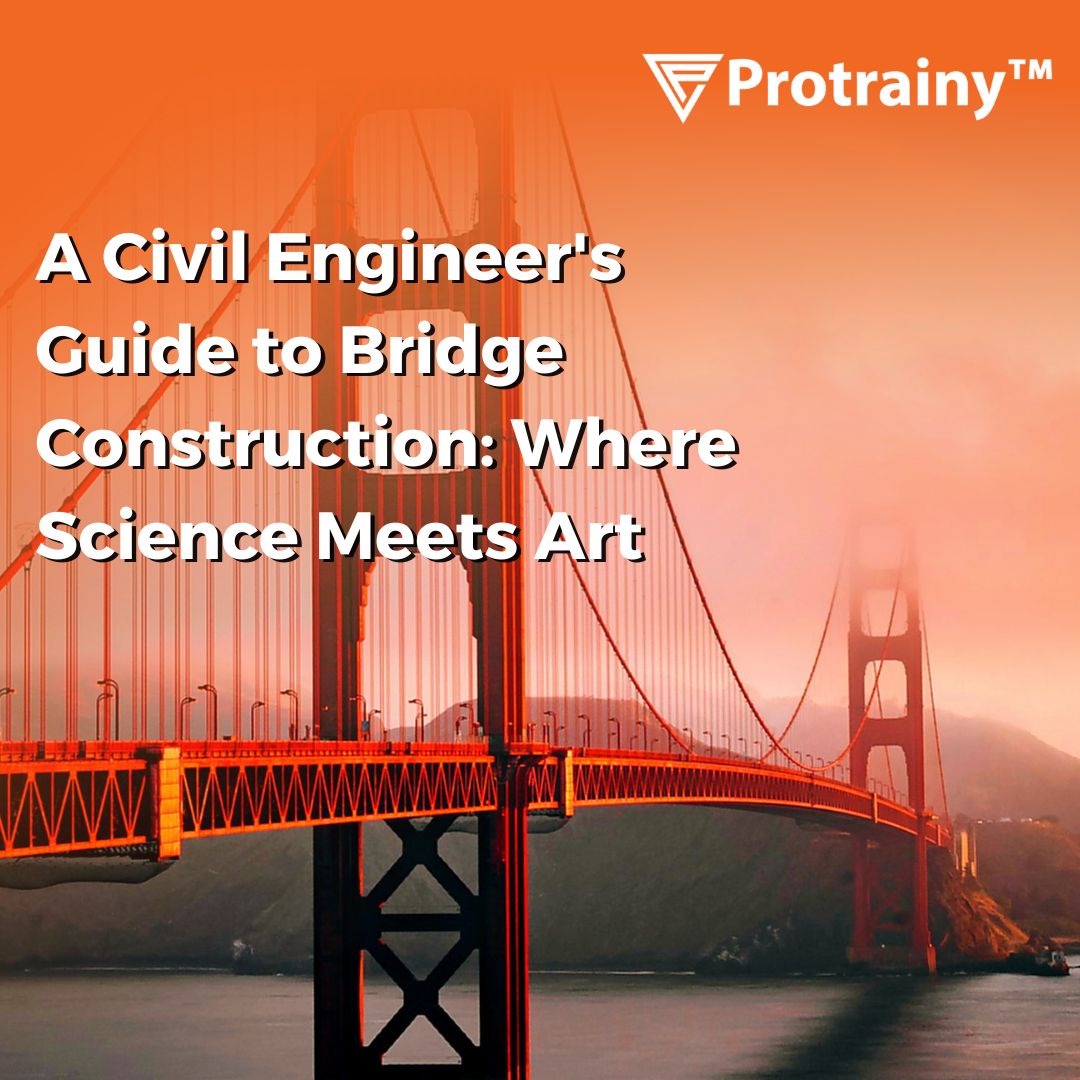Blogs
- Home
- Blogs
A Civil Engineer's Guide to Bridge Construction: Where Science Meets Art
Protrainy | Aug. 26, 2023, 4:12 p.m.

Bridges, those magnificent connectors seamlessly weaving across landscapes, hold an irreplaceable role in our modern world. From humble footbridges to breathtaking suspension marvels, these structures are the embodiment of engineering ingenuity and aesthetic finesse. In this comprehensive guide, we delve into the captivating world of bridge construction, exploring its intricacies, types, and the captivating dance between science and art.
Crafting the Connection: Engineering Mastery
Building bridges is a meticulous dance of engineering precision, encompassing various stages:
1. Problem Definition: It all begins with understanding the challenge at hand - how to elegantly span a geographical obstacle, be it a gushing river or a formidable ravine.
2. Data Collection: Engineers don the hats of investigators, gathering vital site-specific data - information about expected traffic loads, environmental conditions, and geographical nuances.
3. Analysis: The collected data becomes the foundation for developing a host of possible solutions, carefully analyzed to create the most viable bridge design.
4. Design: This is where concepts take form, evolving into intricate blueprints. Dimensions, materials, and construction techniques come together in this meticulous stage.
5. Construction: The grand finale - converting designs into tangible structures. This phase involves excavations, material placements, and the assembly of bridge elements.
The Symphony of Bridge Types
The world of bridges is a colorful tapestry, with each type telling a unique story:
- Beam Bridges: As basic as they come, these bridges use simple beams to support the deck. While cost-effective and ideal for shorter distances, they're limited in their span capabilities.
- Truss Bridges: Think of these as bridges with internal skeletons made of triangles. They're the workhorses of the bridge world, providing both strength and longer spans.
- Arch Bridges: These stunners boast a curved design, distributing weight through the arch shape. Their visual appeal is matched by their impressive strength.
- Suspension Bridges: Picture cables holding up the bridge deck from tall towers. They're perfect for extensive spans, though construction costs can be on the higher side.
- Cantilever Bridges: These employ extending beams anchored at the shoreline. They're cost-effective for longer spans, but they're a bit more complex to construct.
The Heartbeat of Bridge Design
A multitude of factors courses through the veins of bridge design:
- Load-Bearing Capacity: Bridges are designed to handle the weight of vehicles and pedestrians safely.
- Nature's Challenges: Wind, rain, and seismic forces are integral considerations; bridges must stand tall amid nature's tests.
- Material Selection: Engineers opt for sturdy, corrosion-resistant materials that ensure the bridge's longevity.
- Cost-Effectiveness: While engineering marvels, bridges must be cost-effective, balancing brilliance with budget.
- Aesthetic Harmony: Beyond function, bridges are designed to harmonize with their surroundings, uplifting landscapes visually.
The Symbiosis of Engineering and Art
In essence, bridge construction is a testament to the harmonious relationship between science and art. The amalgamation of technical prowess and creative vision results in structures that defy limitations, bridging chasms and uniting communities. As you traverse these modern marvels, remember that beneath their surfaces lies a dance of intellect and innovation - a tangible tribute to human advancement.
From beam bridges stretching over babbling brooks to suspension wonders soaring across vast expanses, bridges encapsulate progress and possibility. So, next time you journey across a bridge, take a moment to appreciate the symphony of science and art that made it all possible. In doing so, you embrace the legacy of innovation and honor the architects of connection and progress.
